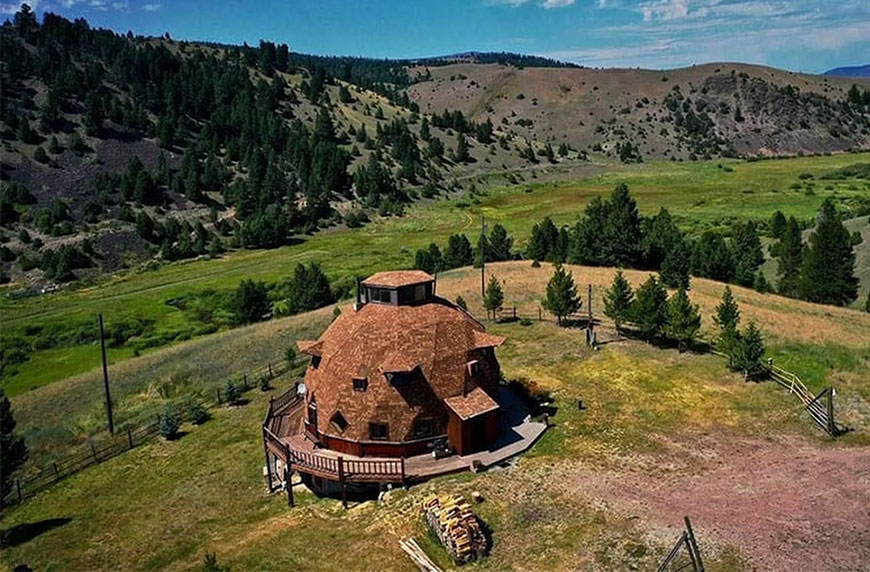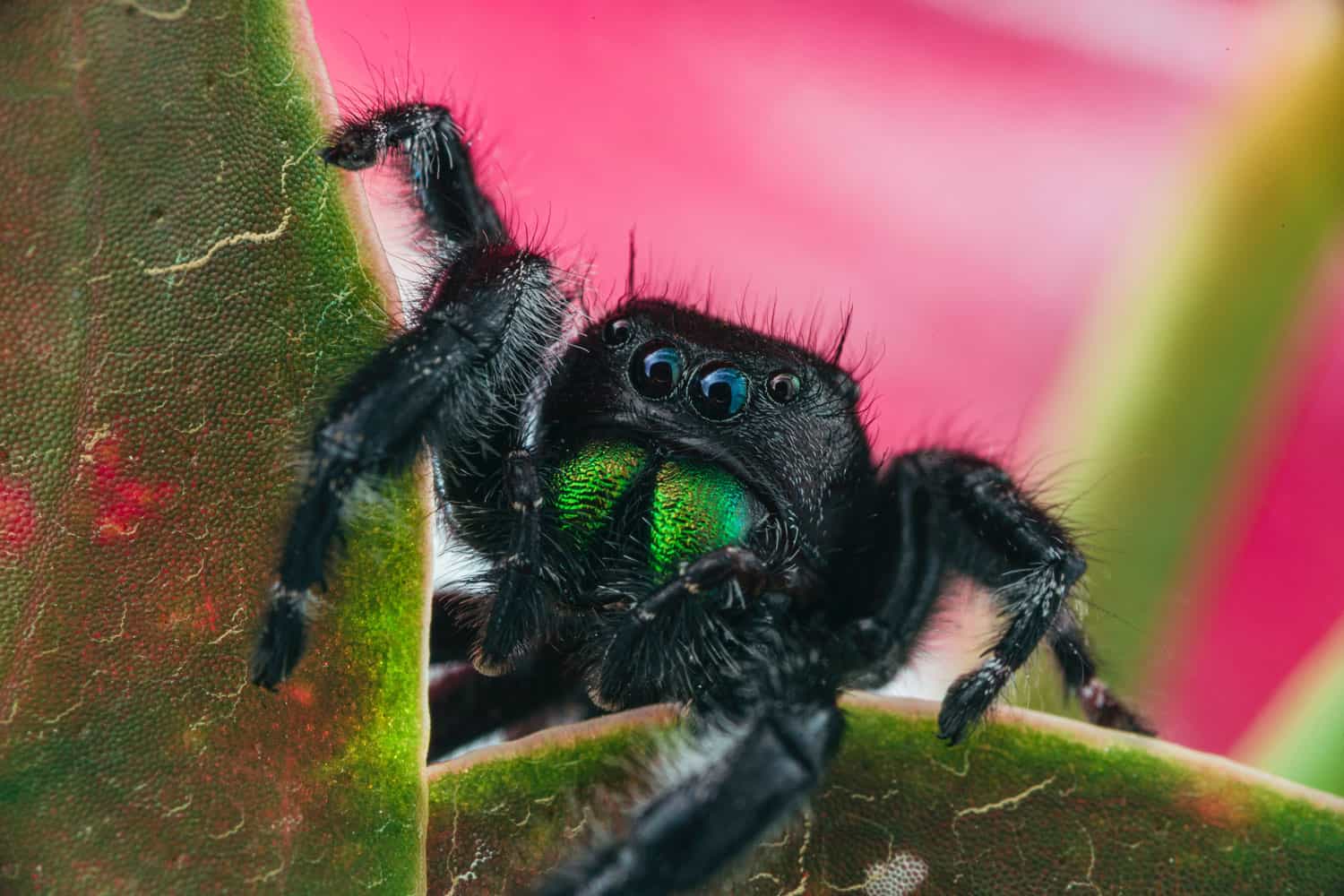Everything You Should Know About Eco-Friendly Dome Houses
Would you live in a dome house? Here's how the option—especially those made with AirCrete—can save energy and better the planet.

Published
Dome structures are more popular than you think. This style of architecture has been used for many historical landmarks, including the Hagia Sophia in Istanbul, Turkey, and Saint Basil's Cathedral in Moscow, Russia. We even see domes in the United States. In fact, almost every state capitol building features a dome.
Humanity has spent centuries building domes for structural integrity and timeless aesthetic appeal. But throughout history, domes were reserved specifically for religious structures due to their upward shape and majesty. Today, however, anyone can live in a domed structure—and that's great news, because they're becoming a housing option that's both eco-friendly and aesthetically pleasing.
Dome-shaped houses, sometimes nicknamed "bubble houses," are on the rise. Just as you can live in a tiny home, Earthship, and cob house, you can purchase a domed home or even build one yourself. Here's why choosing to live in one is great for your finances and the environment.

Types of Dome Houses
1. Geodesic
Geodesic dome homes aren't perfectly rounded. Instead, this home is made up of connected polygons that form the spherical dome shape. This is one of the most contemporary dome styles.
This style is beneficial because it's similar to traditional houses. The individual pieces are easier to manufacture and bring to the construction site. However, because there are so many parts, it's more likely for issues in manufacturing to arise, including loose nails and leaks.
2. Monolithic
Monolithic dome homes, on the other hand, are made of one large piece of material in the shape of a dome. And you've probably seen these types of structures before—the first-ever monolithic dome is the Pantheon in Rome, Italy. This structure usually doesn't have any leaks or individual parts to fix because it's entirely made of one piece of material.
However, these homes can be difficult to construct or remodel because they're one piece and can't be disassembled.
Why Is a Dome House Good for the Environment?
1. Air Circulation
In a dome house, there's nothing to block the flow of air. This means you won't need to have any systems in place to move air around your house. You also may not need to use kitchen or bathroom exhaust fans. Dome houses are excellent for maintaining good air quality without using electricity.
2. Temperature Control
It will take significantly less energy to heat up a dome house during the winter than other homes. Domes retain heat and don't allow much to escape, so you'll conserve energy. This principle informed the very first and ancient dome houses: igloos.

3. Reduced Need for Artificial Lighting
Most people love a beautiful skylight. Dome houses offer plenty of opportunities for that. Windows can be on all sides and on top of the structure, creating excellent lighting throughout the day. This reduces the need to use electricity for artificial lighting.
4. Less Building Materials Are Needed
Due to their half-sphere shape, these homes don't require as many materials as their more standard-shaped counterparts. This is great for both saving money and the environment, as you won't need to rely on unsustainable resources.

Are Dome Houses Expensive?
Housing, in general, can be costly. Generally, the cost of a dome home is cheaper than the average house. Steve Areen's dome house shown above, for instance, cost a total of around $9,000.
If you plan on purchasing a pre-built dome house, it could be tricky: dome houses aren't the most common option on the market, so it's highly unlikely that you'll be able to buy the type you would like in the location of your choice without building it yourself.
If you want to build your own dome house, there are a few options. One material you can use to build a dome house is AirCrete, a mixture of air bubbles and cement. AirCrete itself is inexpensive. If you have some DIY prowess and a large group of people helping you out, you could construct your own AirCrete house! And the best part? Constructing this home may only cost you about $9 per square foot, not including plumbing or electricity.
You could also try a prefabricated dome kit, which is similar to tents; you can put it together yourself. A small home, which would be about 16 feet across, may cost you about $5,530. A larger home, which may be 36 feet across with a 20-foot ceiling, can cost over $24,000.
What Are the Cons of Living in a Dome House?
Dome houses are fun to look at. They're unique and can be the perfect fit for some individuals. However, they do have some downsides. One of the most major ones is that there's a high likelihood that you can't build a domed house in your favorite neighborhood. Oftentimes, there are strict zoning laws that don't allow people to construct dome houses.
Additionally, there are no systems in place to help homeowners financially. You may not be able to take out a mortgage or acquire homeowners insurance.
On a different note, you may run into some obstacles in interior decorating and will have to get creative. For example, hanging picture frames on the wall will be a challenge, as they're curved. If adapting to the curved walls and half-sphere shape seems like a headache, then dome homes may not be for you. But if this seems like an exciting jigsaw puzzle, then go for it!
Another major challenge dome homeowners may face is the lack of privacy. Domes have stunning acoustics. Everything you say, in any part of your dome house, may be heard by those outside the home. Currently, those living in dome houses are working on finding solutions to this. However, this could be beneficial to musicians who need a place to practice with great acoustics.

What Does the Future of Dome Houses Look Like?
Dome Houses are excellent at surviving natural disasters. The shape of the buildings makes them safer than a normal house during hurricanes, tornados, and earthquakes. Climate change and rising sea levels mean we're likely to face more extreme natural disasters, so being in a dome house could make you feel more at ease.
Plus, monolithic buildings, which are built from Airform, can boast an even higher level of indestructibility. They can withstand fire, termites, or rot, and they're even bulletproof.

9 Vegan Meal Prep Recipes That Help Reduce Waste
Meal prepping is a great way to reduce waste and save money. These are the best vegan meal prep recipes to start with.

Fast Furniture May Be the New Fast Fashion
We swipe through fast furniture options like the Tinder of home decor. But how do we stop the cycle and become more conscious shoppers?

Facts About House Spiders That Will Make You Hate Them Less
There's no reason to hate house spiders. Here's facts about house spiders, the most common types, and how they benefit the planet.

